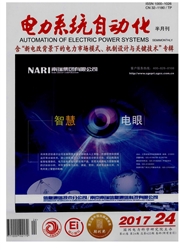

 中文摘要:
中文摘要:
The smart grid has been revolutionizing electrical generation and consumption through a two-way flow of power and information. As an important information source from the demand side, Advanced Metering Infrastructure(AMI) has gained increasing popularity all over the world. By making full use of the data gathered by AMI, stakeholders of the electrical industry can have a better understanding of electrical consumption behavior. This is a significant strategy to improve operation efficiency and enhance power grid reliability. To implement this strategy,researchers have explored many data mining techniques for load profiling. This paper performs a state-of-the-art,comprehensive review of these data mining techniques from the perspectives of different technical approaches including direct clustering, indirect clustering, clustering evaluation criteria, and customer segmentation. On this basis, the prospects for implementing load profiling to demand response applications, price-based and incentivebased, are further summarized. Finally, challenges and opportunities of load profiling techniques in future power industry, especially in a demand response world, are discussed.
 英文摘要:
英文摘要:
The smart grid has been revolutionizing electrical generation and consumption through a two-way flow of power and information. As an important information source from the demand side, Advanced Metering Infrastructure (AMI) has gained increasing popularity all over the world. By making full use of the data gathered by AMI, stakeholders of the electrical industry can have a better understanding of electrical consumption behavior. This is a significant strategy to improve operation efficiency and enhance power grid reliability. To implement this strategy, researchers have explored many data mining techniques for load profiling. This paper performs a state-of-the-art, comprehensive review of these data mining techniques from the perspectives of different technical approaches including direct clustering, indirect clustering, clustering evaluation criteria, and customer segmentation. On this basis, the prospects for implementing load profiling to demand response applications, price-based and incentivebased, are further summarized. Finally, challenges and opportunities of load profiling techniques in future power industry, especially in a demand response world, are discussed.
 同期刊论文项目
同期刊论文项目
 同项目期刊论文
同项目期刊论文
 期刊信息
期刊信息
